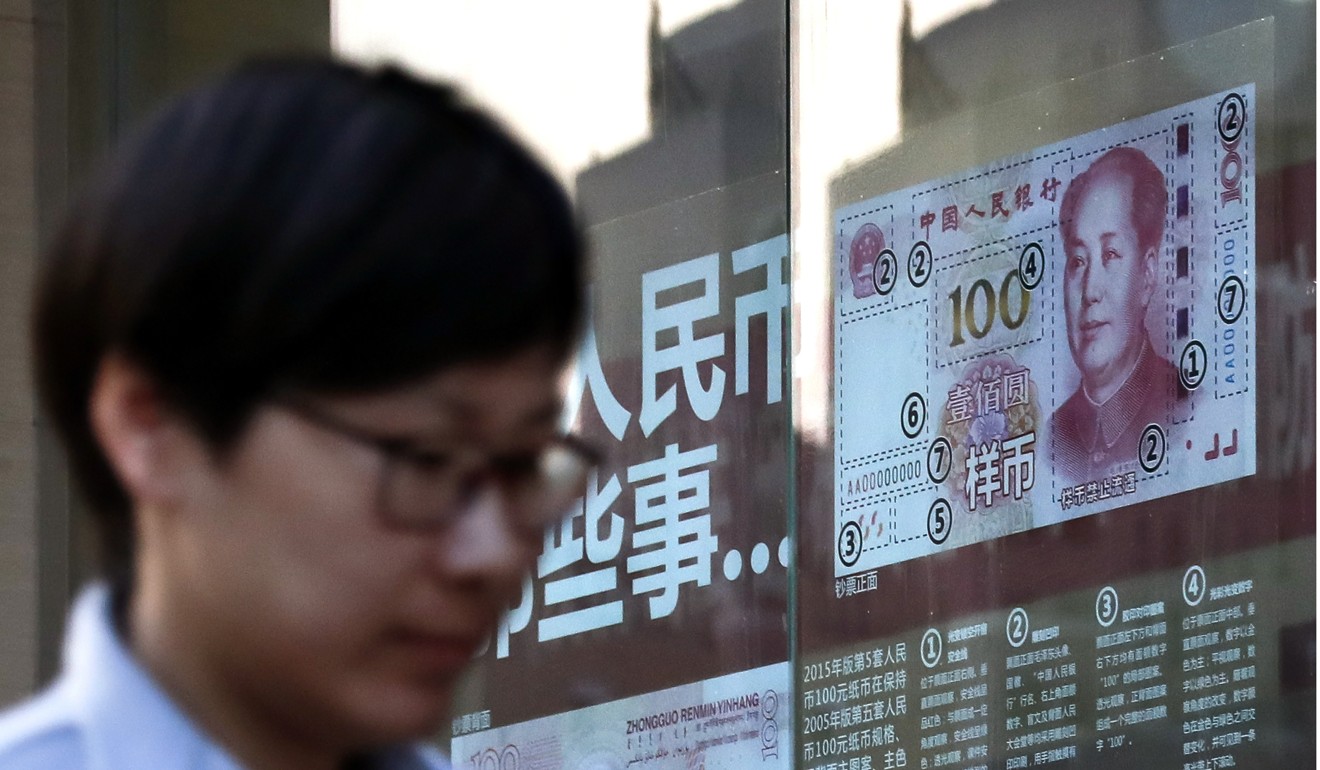
Yuan stable as PBOC guides currency to 7-month high after Fed lifts rates
Analysts expect Fed to remain cautious in reducing its balance sheet, yuan unlikely to face significant depreciation pressure in near term
The Chinese yuan remained relatively stable on Thursday morning, bouncing between small gains and losses, after the People’s Bank of China strengthened the currency’s fixing to the strongest in seven months following a rate increase by the US Federal Reserve Wednesday night.
In the spot market in Shanghai, the US dollar was trading at 6.7936 yuan at 10.30am, up 0.03 per cent from 6.7917 late Wednesday. Earlier in the morning, the US currency slightly weakened to 6.7885 yuan.
The offshore yuan was also choppy in Hong Kong, fluctuating between a tight range of 6.7801 and 6.7891 in the morning. By 10.30am, the greenback bought 6.7865 yuan, almost flat compared with late Wednesday’s 6.786.
Earlier on Thursday, the People’s Bank of China fixed the yuan’s mid-point rate at 6.7852 per US dollar, the strongest level since November. It was also up 87 basis points from the previous fixing of 6.7939.
Domestic traders are only allowed to buy or sell the yuan within 2 per cent of the currency’s daily fixing rate.
Thursday’s stronger fixing came after the Fed lifted its key short-term interest rate by a quarter percentage point to a range of 1 per cent to 1.25 per cent, the second such increase this year and the third since December.
The Fed also held to its forecast of one more rate rise this year and indicated it would start to reduce this year its US$4.5 trillion balance sheet, which increased fivefold during the quantitative easing programme to counter the economic recession in the wake of the 2007-2008 global financial crisis.
The balance sheet unwind, regarded as a more aggressive policy than rate increases, typically leads to a rise in long-term interest rates and stronger expectations of a rising US dollar.
However, analysts interpret the Fed’s balance sheet reduction as “ramping up slowly” due to the weakness in inflation.

In addition, the lack of progress on the US economic policy agenda will also be a drag on the US dollar through 2017, said Stephen Innes, senior trader at Oanda Asia Pacific.
“Until the Tump administration gets their economic house in order, the dollar could struggle to regain its mantle as king of the hill.”
Analysts expected the Chinese yuan to remain stable against the US currency in the short term.
“The US dollar’s strength is capped. I don’t think the yuan faces significant depreciation pressure in the short term,” said Luo Zhiheng, an analyst for Guotai Junan Securities.
Luo said the PBOC has already conducted pre-emptive measures to stabilise exchange rate expectations, including tightening domestic liquidity conditions and altering the yuan fixing mechanism to give itself more leeway in shoring up the currency.
In other FX markets, the ICE US Dollar Index, a gauge of the greenback’s strength against six rival currencies, was slightly weaker at 96.891, compared with 96.939 late Wednesday.
The euro strengthened 0.04 per cent to US$1.1222, while the US dollar softened against the Japanese yen to ¥109.55.

